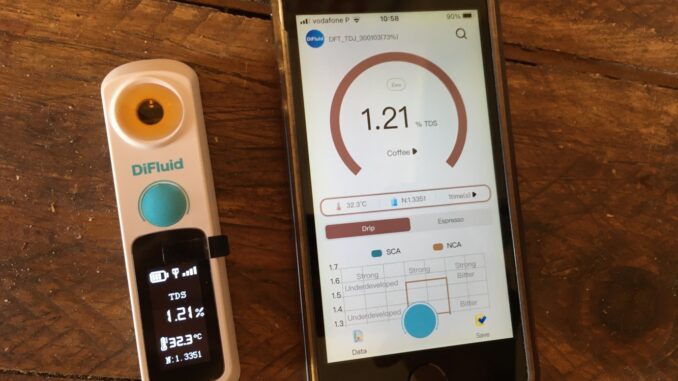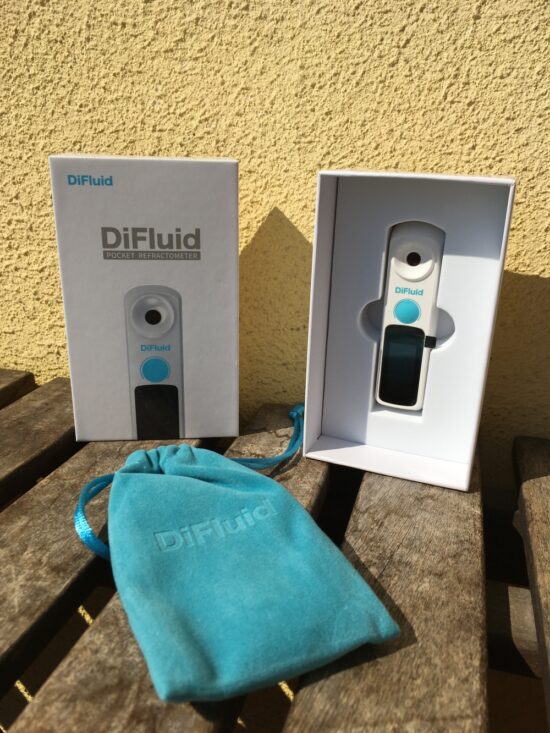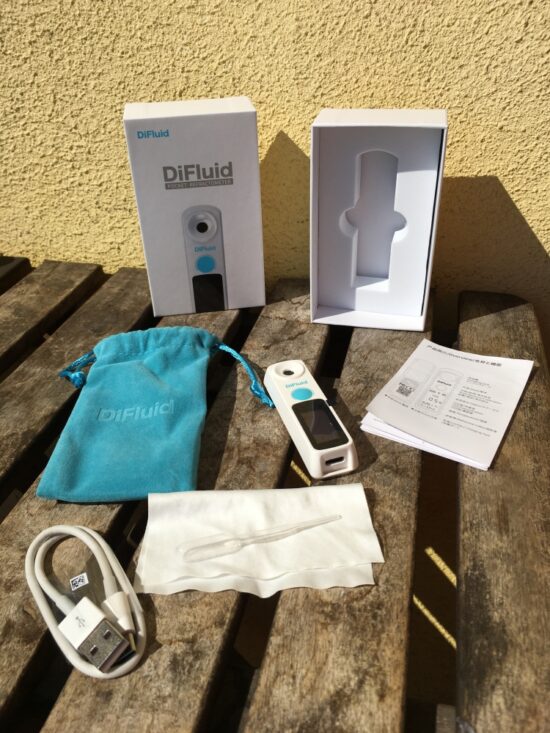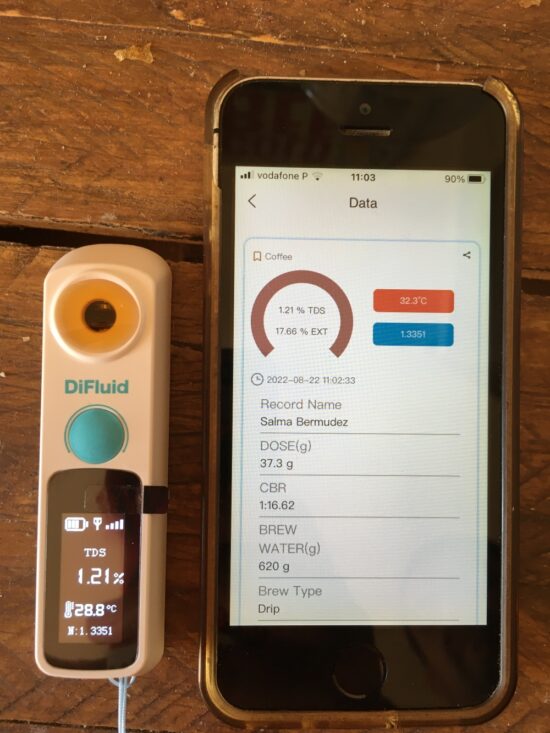
We look into an affordable entry in the coffee refractometer market.
BY TANYA NANETTI
SENIOR ONLINE CONTRIBUTOR
Photos by Tanya Nanetti
The DiFluid Pocket Refractometer makes measuring a coffee’s TDS easy and affordable. The last time I used a professional refractometer to find TDS (total dissolved solids) was a long time ago, when I was still working in a big specialty-coffee shop in Germany. A refractometer is something really useful to find the perfect coffee recipe, or to check if the daily brew extraction has dissolved the right percentage of solubles. But, at the same, it’s usually an expensive item that many owners (and even more home baristas) cannot afford, or don’t think is worth doing.

So I was very happy when I had the chance to try a new refractometer, especially one much cheaper than those normally found on the market. DiFluid, a Chinese company, was founded just last year with the goal of reforming liquid digitalization by creating more intelligent liquid-related technologies, while at the same time providing an affordable product.
Thanks to the team’s background in chemistry, optics, and electronics, and to the engineering expertise providing a low-cost product to consumers while still maintaining professional-level functions and precision, DiFluid recently released a tiny coffee refractometer.
Minimalist and pocket-friendly, the DiFluid Pocket Refractometer comes in a white box that is reminiscent of a trendy smartphone. Opening the box continues the smartphone experience: Everything is neat, precise, and perfectly cared for. Inside you’ll find a light-blue velvet bag containing the charger, a wiping towel, and two small pipettes; a small instruction booklet; and, of course, the refractometer, already charged and ready to use.

As suggested in the instructions, the user easily downloads and syncs the free app (available both for iOS and Android), calibrates the refractometer with some clean water, brews their V60, and then it’s time to check the TDS!
Mindful of what I’ve learned in my years in the coffee industry, I poured some brewed coffee into a separate cup to let it cool down a bit, and after a couple of minutes I took a small amount of coffee with the pipette and dripped it onto the sensor, covering it completely.
A brief press of the refractometer’s one button (which also serves as the on/off switch) is all it takes to get the TDS result.

This is where the app comes into play: With a layout similar to that of the refractometer, the app’s button records the result and, thanks to the loadable data (grams of coffee and water used, coffee brewed), instantly calculates the extraction percentage telling you whether the coffee brewed was extracted correctly or whether it was under- or over-extracted (according to SCA and NCA parameters).
As a last feature, the app also allows you to save and share the collected data, adding other useful information about the brewed coffee—from the country of origin to the name of the roaster, the brew time, and the roasting style.
All in all, the DiFluid refractometer seems like the perfect tool for checking TDS and extraction percentage for both the home barista and the professional coffee shop, thanks to its affordable price (less than $200, far cheaper than many other professional refractometers already on the market), and to the intuitive app that calculates extraction without the barista having to resort to difficult mathematical calculations.
Moreover, being waterproof and really small, it also serves as the perfect travel companion for those who want to brew a perfect cup of coffee away from home. The only downside is probably the small size of the refractometer, and its (at least apparent) fragility, which may not make it suitable for use in a busy work environment where it could easily fall or break.
ABOUT THE AUTHOR
Tanya Nanetti (she/her) is a specialty-coffee barista, a traveler, and a dreamer. When she’s not behind the coffee machine (or visiting some hidden corner of the world), she’s busy writing for Coffee Insurrection, a website about specialty coffee that she’s creating along with her boyfriend.

